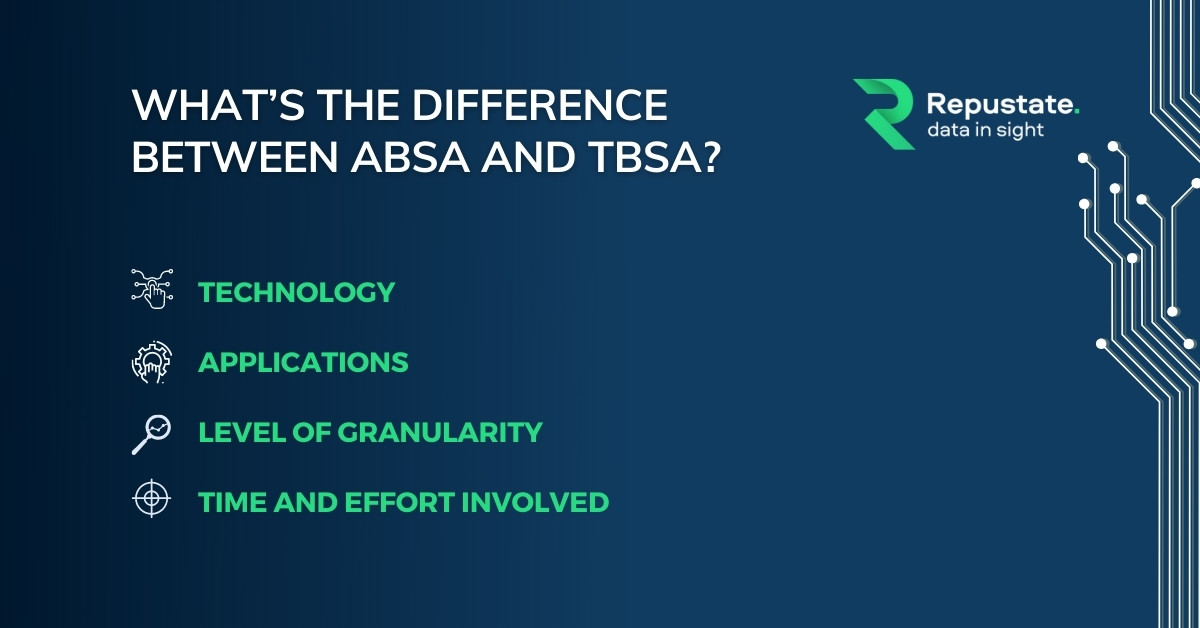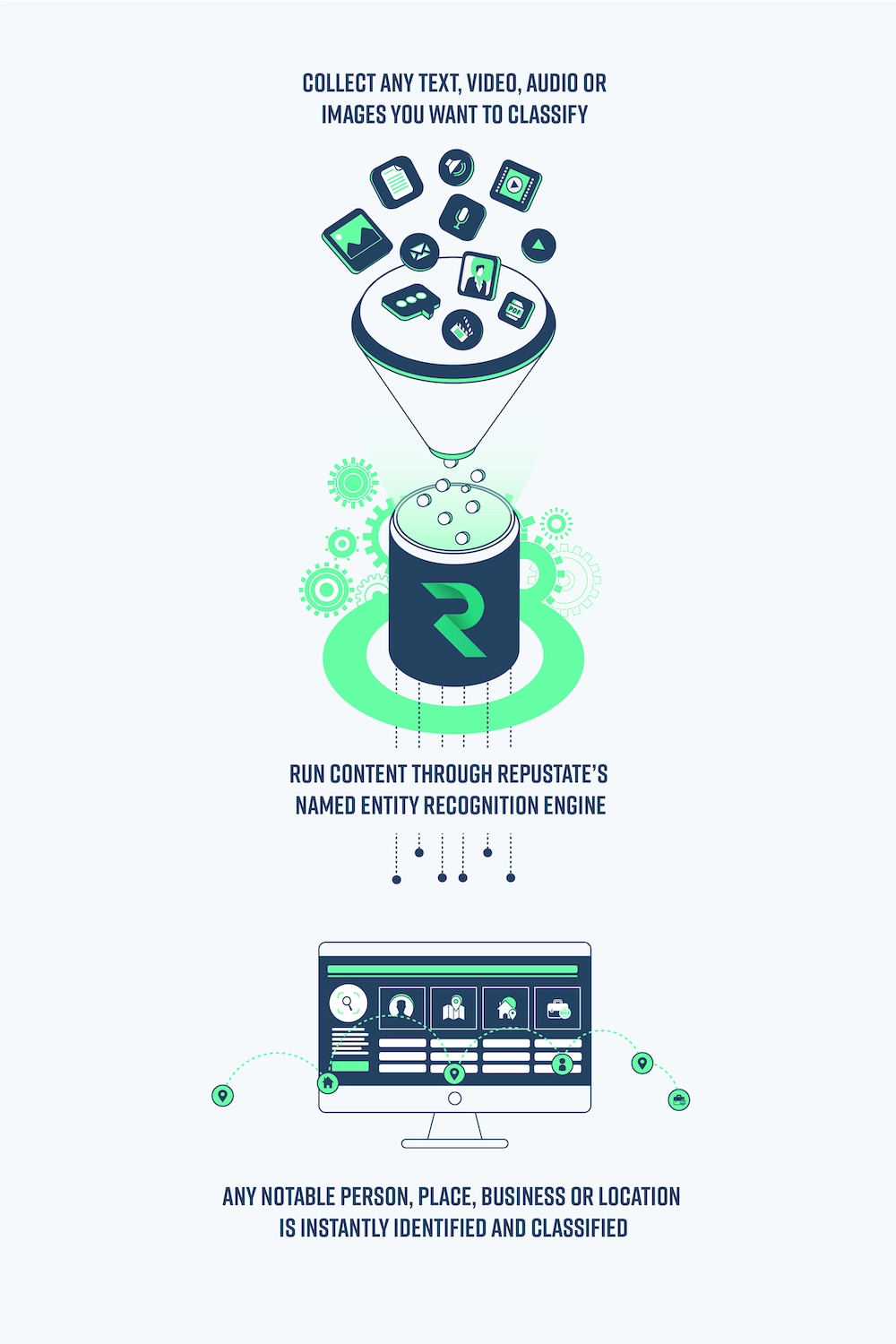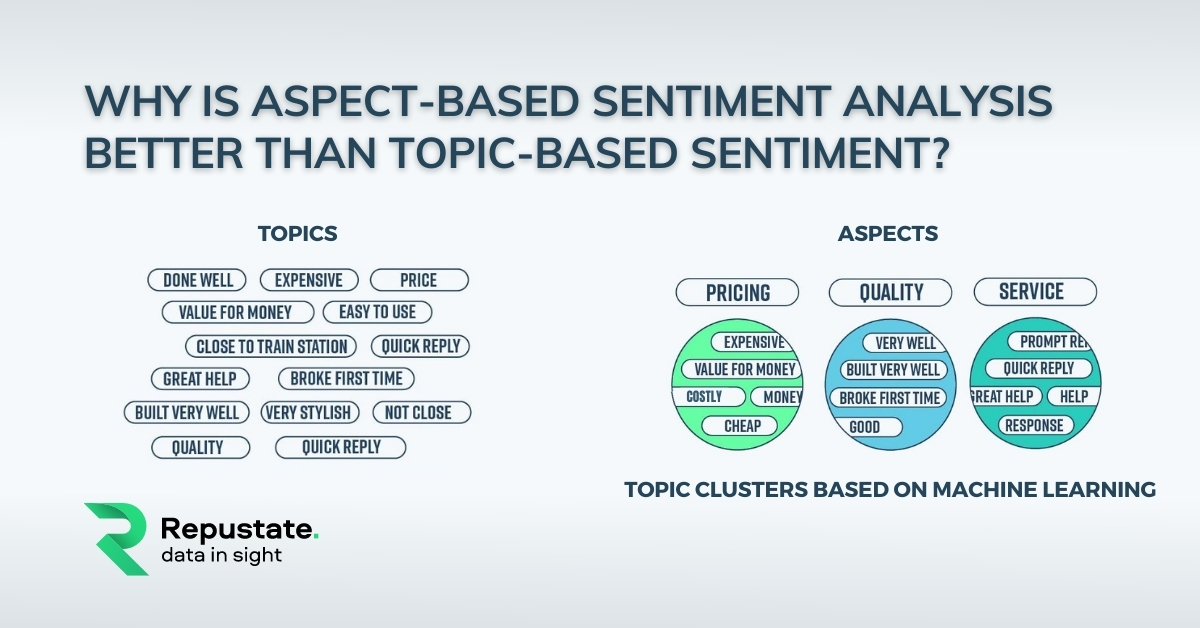Why Is Aspect-based Sentiment Analysis Considered Better Than Topic-based Sentiment Analysis?
Let’s compare the competitive advantage of using aspect-based sentiment analysis (ABSA) over topic-based sentiment analysis (TBSA). For diligent market research, it is imperative to get a clear picture of what strategies will succeed and what won’t - whether it’s for a new product launch, new service, product positioning, or even for a new target market.
Earlier in the day, the only resource available was through surveys, which were collected and studied manually. However, with social media at its peak, and review websites like TrustPilot, TripAdvisor, Glassdoor and so many like these, data is just out there, ready and available to be harnessed for business intelligence. Sentiment mining thus gained can help companies with brand monitoring, crisis management, marketing campaigns, better customer service, better consumer engagement, improved work environment, and many other such functions.
In this article, we’ll take a look at what makes aspect sentiment analysis a better choice than traditional topic analysis while considering the above-mentioned.
What’s the Difference Between ABSA and TBSA?
Aspect-based sentiment analysis is a customer-centric approach to understanding consumer emotion, while topic-based sentiment analysis is more product-centric. ABSA gives a comprehensive view of consumer likes and dislikes, so you can narrow down to the particulars of what aspects of your business can be improved. Topic analysis, on the other hand, gives a general view of the consumer’s overall feelings about his experience with your product or business.
Let’s delve into the main differences between the two.

- Technology
Topic analysis is a peripheral application of contextual semantic search (CSS) and semantic similarity and clustering, while aspect sentiment analysis employs in-depth CSS that goes beyond thematic clustering and related sentiment. Both use natural language processing (NLP) techniques to gain meaningful information from data.
In topic-based sentiment analysis, topics are analysed for sentiment related to the place, business, industry, etc. When analysed at scale, the text analytics tool recognizes recurring themes and clusters them together based on semantic similarity. In this way, you may know that the customer service has positive sentiment at location A, but has negative sentiment at location B. Or, that product A has better consumer sentiment than product B. These insights help a business make strategic changes to their existing model of product marketing.
Aspect-based sentiment analysis offers a more thorough understanding of the data from reviews, and especially in surveys, because along with NLP tasks it is also powered by named entity recognition (NER). Because surveys have open-ended questions, responses to them can be detailed, verbose or cryptic, and have multiple topics within one answer. Which means, while TBSA may tell you that the customer service at location A has an overall positive consumer sentiment than location B, because of NER, ABSA will tell you exactly what it is about location B that is leading to a less positive experience. Is it the long wait time? Or, perhaps, less staff during peak hours? Or is it that the consumers at location B have different language preferences than location A.
- Applications
Topic-based sentiment analysis can be applied to many marketing and business functions like brand monitoring, employee motivation, or industry-based analysis like stock sentiment analysis or healthcare. While there can be many useful insights that can be found from the application of TBSA in these areas, aspect-based sentiment analysis can give a more robust, action-oriented holistic approach to these functions.
With aspect sentiment analysis, because the approach gives far clearer and more specific insights, companies can leverage targeted strategies. Like, they can invest in influencer marketing by finding the perfect brand ambassador through identifying follower personas or even consumer personas. Or, you can protect your brand reputation by real-time vetting of news and comments to apprehend inappropriate remarks from trolls. You can also, importantly, keep abreast of your competitors by seeing what it is that makes a similar product or service tick with consumers more than yours, and why.
Aspect-based sentiment analysis is equally pivotal in customer support automation for increased efficiency and adeptness, thanks to its semantic clustering capability. In order to really make substantial changes for increased productivity, a company needs to analyse topics down to the finer layers of its various aspects. For example, at a bank, the topic “credit card issues” can be narrowed down to aspects like billing, online banking, mobile banking, customer service, credit card insurance, money-back, and points. While, at a fast-food chain, under the topic “menu” aspects could be exotic coffees, new smoothie flavors, savoury snacks, pastry types, cake designs, etc. This kind of detailed analysis can only be achieved by aspect sentiment analysis.
- Level of granularity
With ABSA, companies can not only detect whether employees are satisfied at work or not, but the very reasons for it. Perhaps, there is a need for overhauling your training programme. Are there too many unproductive meetings, or a general disconnect between the management team and grass roots employees? While topic-based sentiment analysis can give you a general idea of what your staff thinks of your organization and the decisions you make, to analyse their comments in voice of the employee (VoE) data and reviews sites like Indeed and Glassdoor, a more indepth, granular approach is definitely required.
Similarly, in the hospitality industry, aspect-based sentiment analysis can be a gold mine of rich information. Unlike the simpler topic-based sentiment analysis, aspect sentiment analysis can tell you why people mention that they wouldn’t want to come back, even though they gave a generally positive review of your hotel. Is it the location, the commute, or the check-in and check-out times that don’t do justice? Or perhaps, it is something out of your control, like bad weather.
Consider this analysis of different hotel reviews to get a better idea of how aspect-based analysis gives much needed business intelligence from voice of the customer (VoC) data.
- Time and effort involved
Being product-centric and simpler, topic-based sentiment analysis can be faster and involves less effort. ABSA, on the other hand, is more comprehensive and so has more technical depth. Through NLP and NER, it ensures that all aspects and themes are recognized, analysed for sentiment, and then an aggregate score is designated to that particular aspect. Therefore, under the hood, there is much more happening with aspect sentiment analysis than with topic analysis.
What matters most behind the scenes, is the strength, speed and accuracy for the NER capability. Why Repustate’s aspect-based sentiment analysis engine is so robust is because of these very reasons. Repustate’s NER is the fastest and most accurate in the world compared to other engines on the market like even Google or Amazon. Check out the statistics and read the data.
What makes Aspect-based sentiment analysis better?
NER & Semantics!
While topic analysis only applies NER, aspect sentiment analysis employs both NER and semantic clustering. In this way, it automatically identifies key themes and topics in any data important to your organization and finds semantically similar words that can be grouped together to get an even more intricate comprehension of topics. This makes ABSA a more powerful tool than topic analysis in emotion mining for business insights. For better understanding, Named Entity Recognition is a machine learning task that identifies named entities like H&M, London, Kobe Bryant, Ferrari, and such, in the collected data and classifies them into predetermined categories like company names, regional locations, names of people, brands, etc.
In business, this translates into you getting insights based on parameters you set like competitors you want to assess, organizations you want to associate with, consumer audiences you want to target, and so on. You have the freedom to analyse data from any source you want, whether it is Facebook comments, YouTube review videos, business review sites like G2 or Capterra, or even your own organization-wide surveys and chatbot data.

When NER combines with semantic clustering, it allows the algorithm to examine the context between recurring words in review data and thus form groups of aspects that are placed under one topic. (See diagram) This leads to a better understanding of the intent of the consumer when they mention your brand on VoC platforms, social media channels, or surveys.
When should you opt for ABSA?
(or, till what level is TBSA acceptable?)
If you want a basic understanding of what irks or delights your customers, its topic analysis all the way. But if you want to dig deeper for improved product and service quality, ROI, and branding & advert campaigns, ABSA is your answer. This is a valid question for any company to ask, though. After all, you’ve decided to opt for an AI-based machine model to analyse data, invest in it, and hope to use the insights for optimization of resources and marketing functions. Now the question becomes - up to which level does topic analysis suit your purpose and when, as you up the ante on your game, is the right time to employ ABSA.
Topic-based sentiment analysis uses a machine learning algorithm that is trained to spot and identify topics in relevant data that has been gathered from audio, text, or video data. If you want to benefit from machine learning without splurging too much, topic-based analysis is apt for you. You can use it to extrapolate insights from consumer comments or even just news. Automation enables you to eliminate human bias and limitations in review analysis and offers you advantages of speed and scale.
However, if you want a better understanding of consumer sentiment and therefore, consumer behavior, through in-depth analysis of historical and current data, you need to adopt aspect-based sentiment analysis. Because aspect sentiment analysis breaks text down into smaller chunks and uses semantic clustering, it allows for more accurate insights from your data. Additionally, an ASBA engine that can read multiple languages natively like Repustate’s does, will give you a powerful solution for market outreach across geographies in a more strategic and ROI-friendly way.
 Home
Home
 Jul 12, 2021
Jul 12, 2021

 Jeremy Wemple
Jeremy Wemple
 Dr. Ayman Abdelazem
Dr. Ayman Abdelazem
 Dr. Salah Alnajem, PhD
Dr. Salah Alnajem, PhD
 David Allen
David Allen

 Repustate Team
Repustate Team

